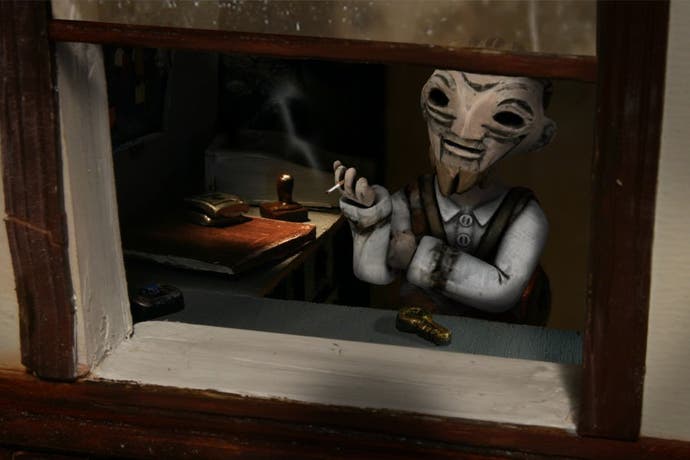The Dream Machine
Waking life.
And it's here, in the division between reality and fantasy, that the game really dives in and swims around the point-and-click gene pool. Puzzles in the real world are mechanistic in nature – fixing things, working out keycodes and so on. In the dream world, the thinking required becomes more lateral than literal, especially since items can have multiple uses in different contexts. One memorable example involves a hammer and an anvil. There's something very obvious you can do with these tools, but they're also integral to one of the cleverest puzzles in Chapter 2, one that relies on vaguely remembered school biology lessons for the penny to drop.
Perhaps most importantly, the puzzles make narrative sense. An early circuit board puzzle is justified by what it reveals, while just-out-of-reach keys and jammed lift doors feel like a natural part of the ramshackle block of flats where the game takes place. The game never drops random obstacles in your path just to keep you clicking, and the pace strikes a welcome balance between relatively simple inventory sequences and the occasional evil headscratcher.
When the game does break out the hardcore puzzles, it doesn't hold back. Solving one dream world problem found me reaching for paper and pen to put together a map, something I hadn't done since the 8-bit era, while the final puzzle of Chapter 2 had me completely stumped, until I realised that I'd seized on what seemed like the obvious solution, and in doing so managed to completely miss the actual solution, which was just as obvious in its own way but far more clever than the kneejerk response my ageing synapses came up with. When that happens, and the answer becomes clear, the thrill of solution remains one of gaming's greatest pleasures.

Throughout, progress never feels artificially slow, and the story benefits from a light touch that keeps things moving forward without patronising the player. Many point-and-click games shove their story to the background, using it as an abstract hook to hang the puzzles on. The Dream Machine wants you to care about its weird, lumpy characters, and the puzzles are the means to that end. Both chapters so far have ended on pitch-perfect cliffhangers, where you're engaged by the implications for Victor and Alicia, not just by the prospect of a new location and more logic conundrums.
In fact, it's so cohesive in its oddball DIY universe, and so confidently strung together, both in terms of narrative and gameplay, that it's easy to forget that it's the work of just two indie developers. It's not polished, as such, but its rough edges feel organic and deliberate. Each chapter offers a few hours of gameplay, and though die-hard adventure gamers may find some of the structure a tad easy, there's a nice balance between encouraging newcomers to the genre to keep going while throwing in some fiendish brainteasers to maintain a worthy challenge.
Telltale has made the online episodic adventure its own, but The Dream Machine suggests it won't have the field to itself much longer. It's quirky and memorable, but most of all it's a classic point-and-click game at a pocket-money price.
The first two chapters of The Dream Machine are available now. You can pre-order all five chapters for €13.75.
